More Lijiang Ancient City Zhongyi Market

Along with fresh produce and homemade goods, the market also features meats: preserved, fresh, and living.
Smoked and preserved meat like this were being sold outside of the shed along the alley.

The butcher shed, a pavilion of about 60 vendors selling fresh meats. Not a freezer or pair of rubber gloves in sight, this is how meat is bought in sold for the thousands of nearby residents and tourist-catering restaurants in Lijiang. Like the nearby produce sections, this place was hopping, people were yelling, tossing product from place to place, and hacking away with cleavers. The tables were old, stained with decades of dried blood, and meat was strewn across them and hung over their ends with no butcher paper or wrappings. Behind the tables full carcass are being disassembled and every part is sold if it can be. Bones put in piles below the tables for the “bone ladies” to collect in their big baskets and to haul off in their carts. Walking up and down the aisles, I saw crazy things… as would anyone in a butcher shop who hasn’t been directly exposed. The sight of blood dripping and flying, the smell of flesh everywhere… it’s not something people here would be able to tolerate. Every animal domesticated in this region was being hacked apart and piled high on tables. Families from farms miles away would have one table, one pig, and a set of knives…. and that would be their trade, their income, their life– doing this every day.
The place was dark. Darker than the produce section, although like it, everything was a bit damp. Hacking, slapping, knives being sharpened, people transacting in several languages, and the faint clucking of chickens, quacks of ducks and rattling of cages filled in the gaps between the other overwhelmed senses. My eyes were scanning back and forth to take it all in, and I just kept moving. I didn’t even realize until I was 30 minutes in, the cuff of my jeans were soaked with blood. The old cement floors scraps everything on them.
I’m no fan of butchering. And the Buddhists that live here are passively against it. It is not my place to condemn meat-eating cultures, and especially those that dine on meats of species that may be taboo to others.
I can tell you I do condemn people for eating meat. People that dine on endangered species or those that purposefully torturer animals in the name of greed and taste, can rot in hell. The Chinese are no exception to this, but here we have domesticated animals, bought and sole to keep people and commerce alive.
Coming from a background that touched upon microbiology and sanitation, I was a bit more concerned with the cleanliness of the place. It’s not. At least our FDA would raid it if they could. But the problems that plague the west’s meat markets don’t exist here. Yes,, food poisoning does happen here… often. And sometimes it can be because of unsafe meat handling. But the difference between the US Beef industry and the yaks that were sold here that I actually ate, is that the US is mass producing animals in highly unsafe conditions and pumping them full of anti-biotics. The yaks saw in the mountain parries, who’s flesh were torn apart here, and then I ate in a cooked dumpling later on, were not mass produced. It didn’t get sick my eating the protein-packed feed fortified with animal carcasses. If one got sick, it died. It didn’t have a chance to infect 3,000 more yaks. It’s blood was drawn on a table with maybe 2-3 more yaks, not thousands. And it was slaughtered, sold, and cooked all in the same day. Bacteria has little chance to outbreak here. A big sign of the health of this place is not within the amount of gloves, hand gel, and shiny metal surfaces. It’s in the processing time and quantity. This was fresh meat. The place completely smelled like death, but it was not rotting death.
I noticed a trend… all the fresh meat vendors were women and their daughters. ALL.
We asked. The answer: “The husbands are in the fields taking care of the animals, of course.”
Need guns? Call this guy.

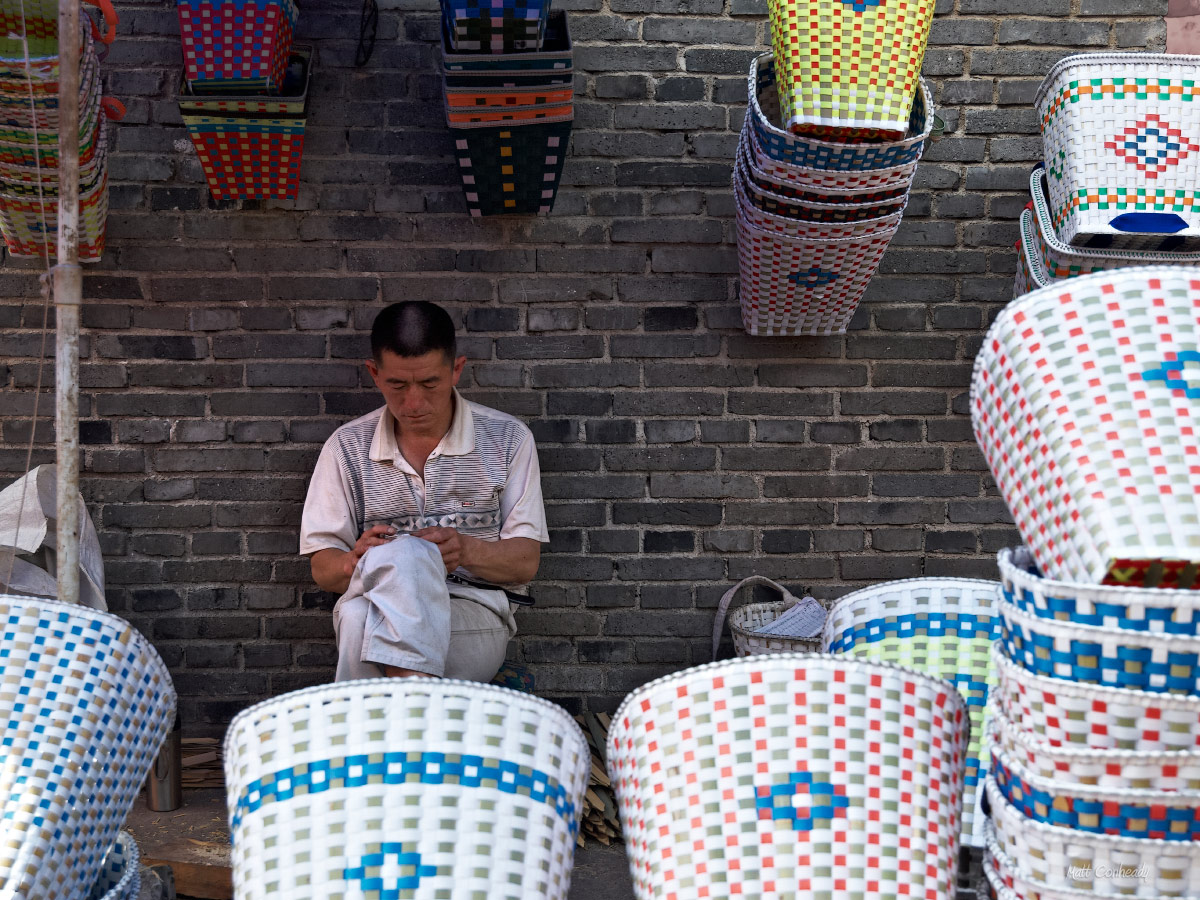
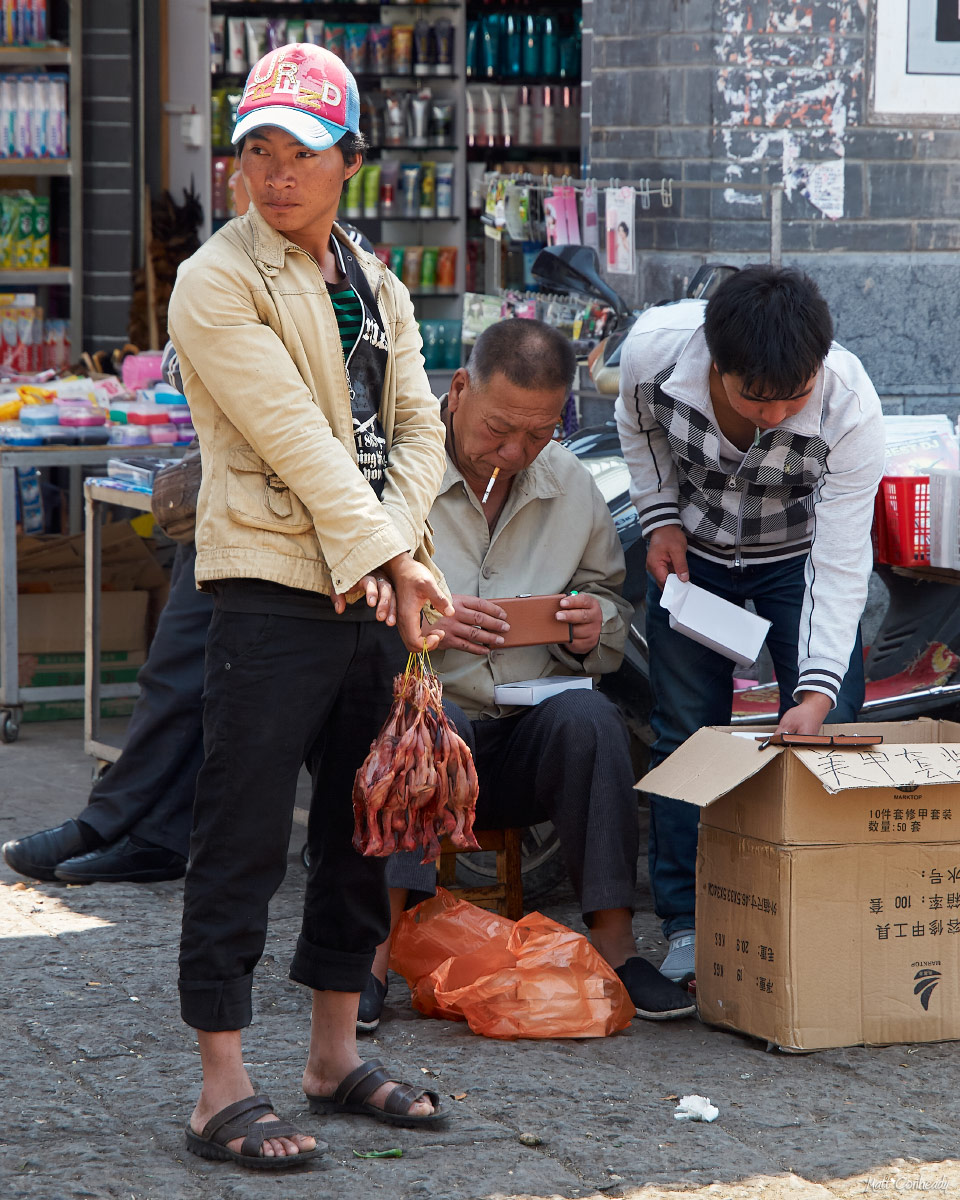
One of the larger vendors… she actually had stainless steel tables.

Cuts of fresh pork back
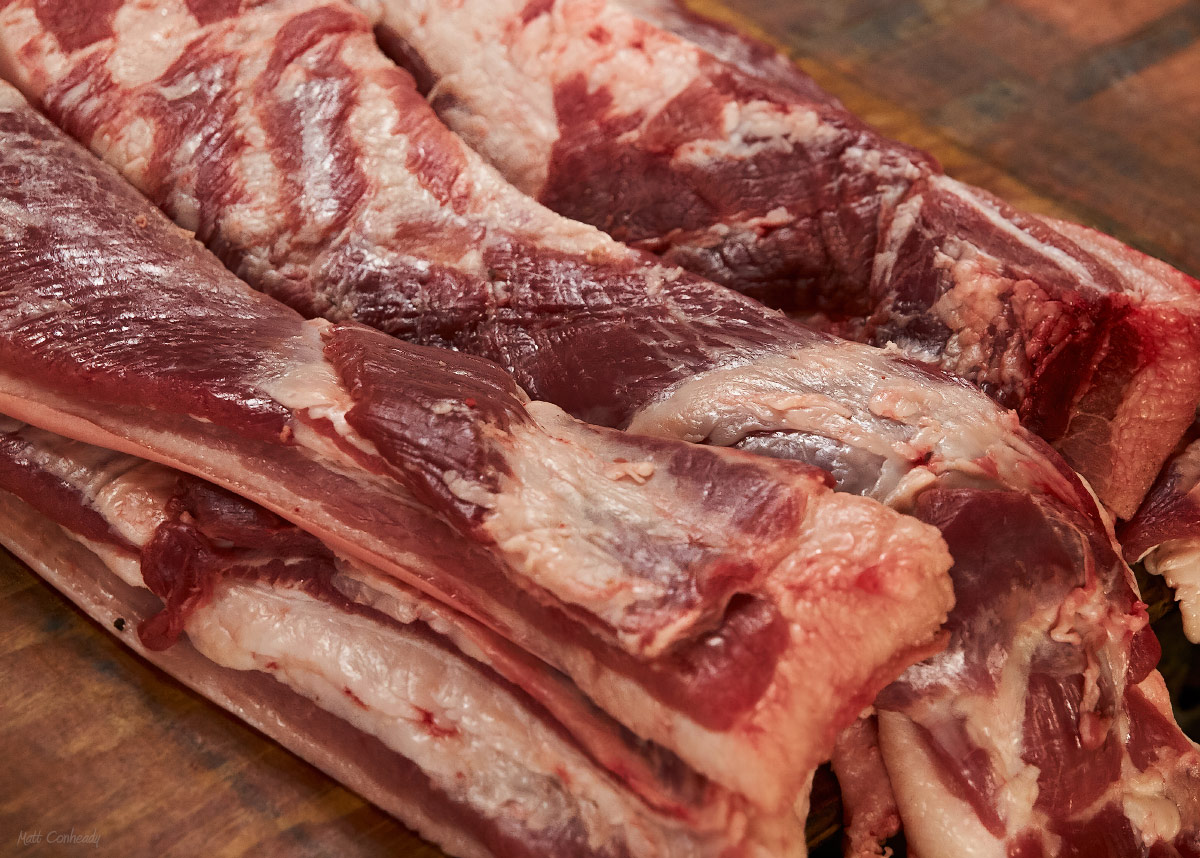





A few vendors has slicing machines such as these. They slice to a those bite-size pieces that are perfect for Chinese dishes.


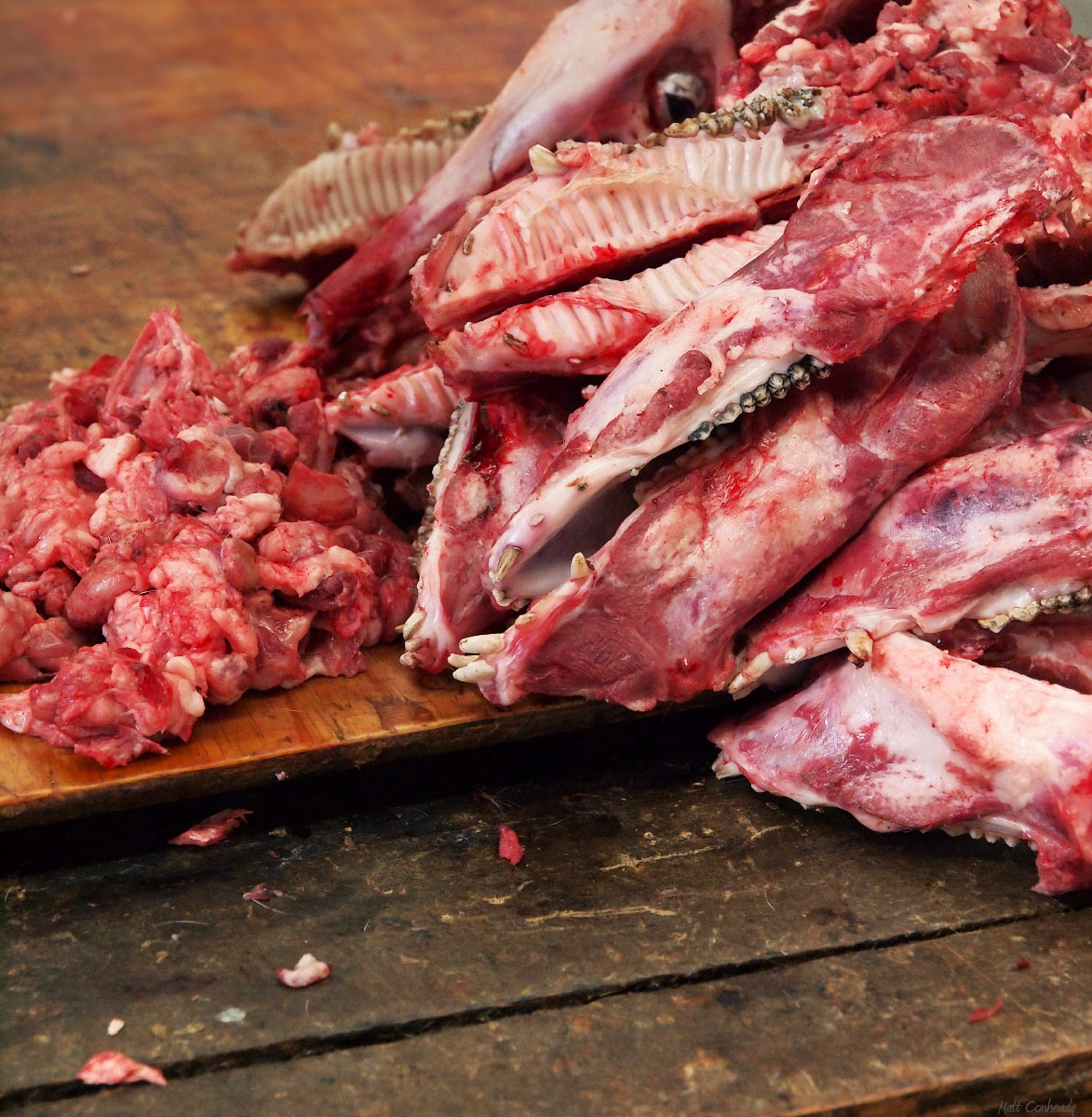

The back room, which I barely noticed until someone pointed it out to me, was lined with hundreds of poultry cages, so it was almost like a hallway. In the center were stacks of live mammal cages, from rabbits to ground squirrels. Open rooms on the far side were stations for each vendor, men, and cages for their larger livestock. Of these were sheep, yaks, pigs, and domesticated dogs.
Dog meat is not popular in China. Not as much as it used to be… and certainly not as popular as other meats. It really is more of a traditional dish. A tradition that was handed down from the days when eating a dog was an act of survival. Dogs were domesticated as hunting and protection pets. They were bred specifically to have traits for these tasks, but also they were bred to have traits that related to humans, so they can work for us, be friendly to us, and so we can better understand them. Although we can get into a debate about a dog’s “love” being the same as a human’s and that they are such intelligent creatures compared to cows and pigs or whatever. I don’t have to. There are plenty of studies and books on this already. Even if the facts are all there ,I know, I know, I can look into Fido’s eyes and see he is so smart (especially when he shits in the living room) and that he’s loved just like a son or daughter (until that vet bill is too expensive and he gets the gas chamber). I will fum up some facts. What many people consider about dogs to be humanity are actually traits we bred out of them over thousands of years. Wild dogs generally don’t express those traits. We kind of designed dogs to behave this way by continuing to breed those that behaved a certain human way and discarding those that behaved more like a wild dog. That is not to say a dog doesn’t have feelings or is not intelligent. The issue is that we cannot say that a dog has the same kind of feeling and is as intelligent as we think. We bred them to behave that way. They are tricks embedded into the genome. Now that all the dog-lovers hate me, I will say: I don’t, and most Chinese don’t, want the slaughter of dogs for food to continue in China. They are cute and they don’t taste that great.
But why is it important that people follow through with this in these rural parts in the west? There was a time when in the winter up in the higher altitudes, when crops were gone, livestock were diminished or wiped out, and dogs proliferated, it was an option that could not be refuted. The mature domesticated dogs had given a lot of puppies in the spring. The dogs feed and care for themselves. They cost little or nothing to raise, and they fair pretty well through winter.
Families ate them to survive. The eating of dog became a winter tradition along with that a family tradition. Even in the major cities, like Chengdu, restaurants will server dog, but only in winter and usually by request.
Is there something wrong with that? I can’t say that because I eat beef, and 1 billion Hindus could judge me just the same.
Maybe it would be a better world, and we wouldn’t have to face imagery like this if we didn’t butcher animals at all, regardless of species. But we don’t. Perhaps the disagreements we have in regard to what animals we can and cannot eat can help us understand that perhaps treating any animal this way is not exactly ideal.

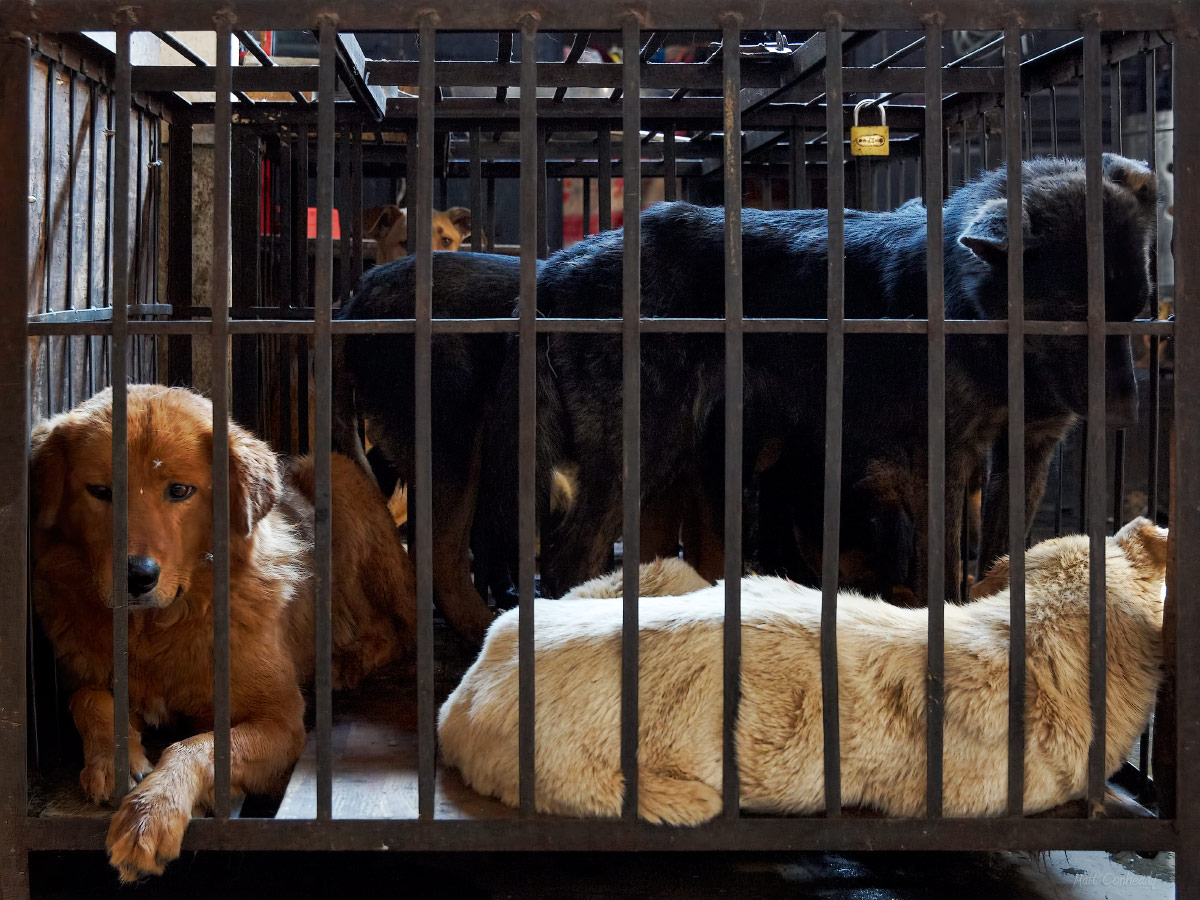
That’s it for the meat market. I wasn’t allowed to photograph.
A normal scene of the produce market, but what matters here is the “propaganda” along the walls. The old village is such an important heritage site, walls of public spaces are covered in information about fire prevention and preparedness.

I hate fish, so I didn’t spend much time in the seafood section… here’s someone filleting some eels.

Processing taking place right in the middle of the market… notice a bowl for air bladders (a delicacy in soups) and one for gills.
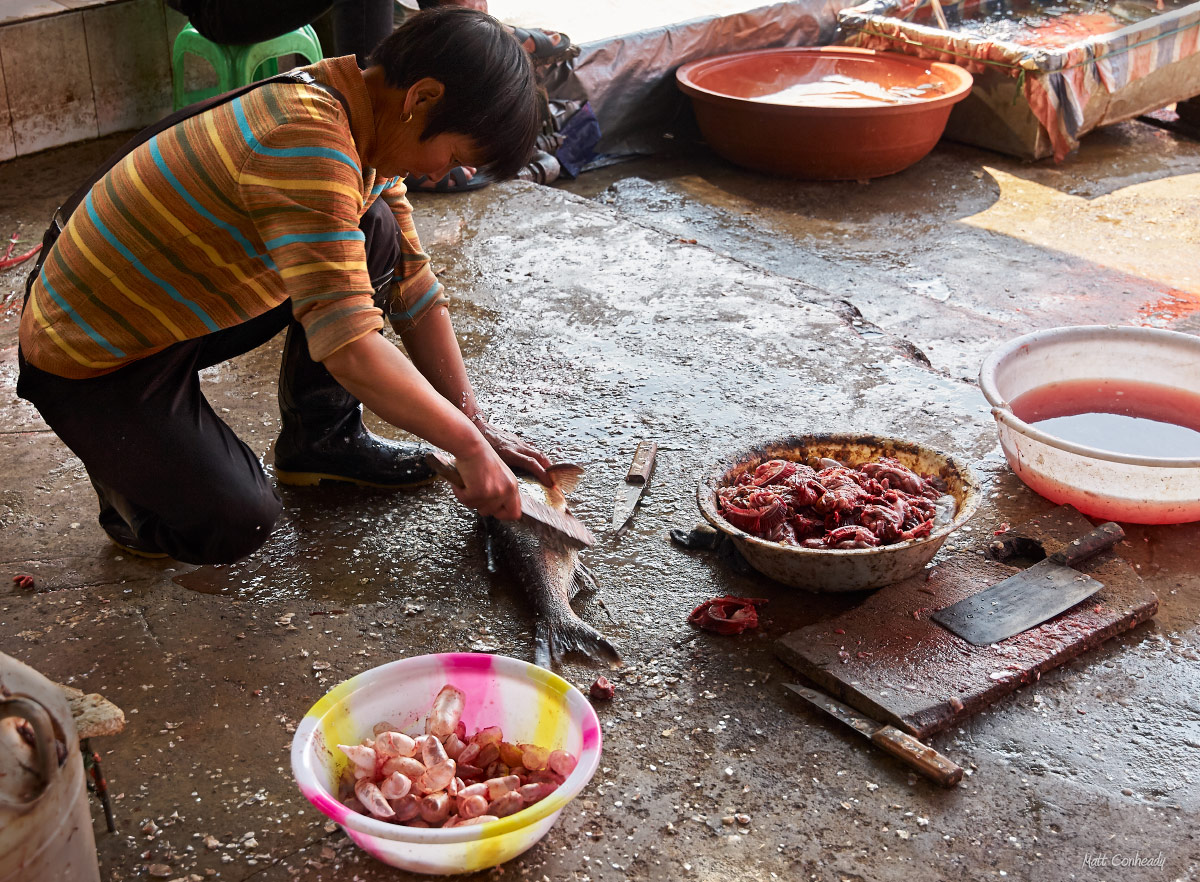
Dragon-fly larvae… the same ones are served roasted on a stick in the street food market. The larvae are aquatic predators, thus they were right next to the fish.

PORK RINDS!!!! ( a street vendor was selling them)
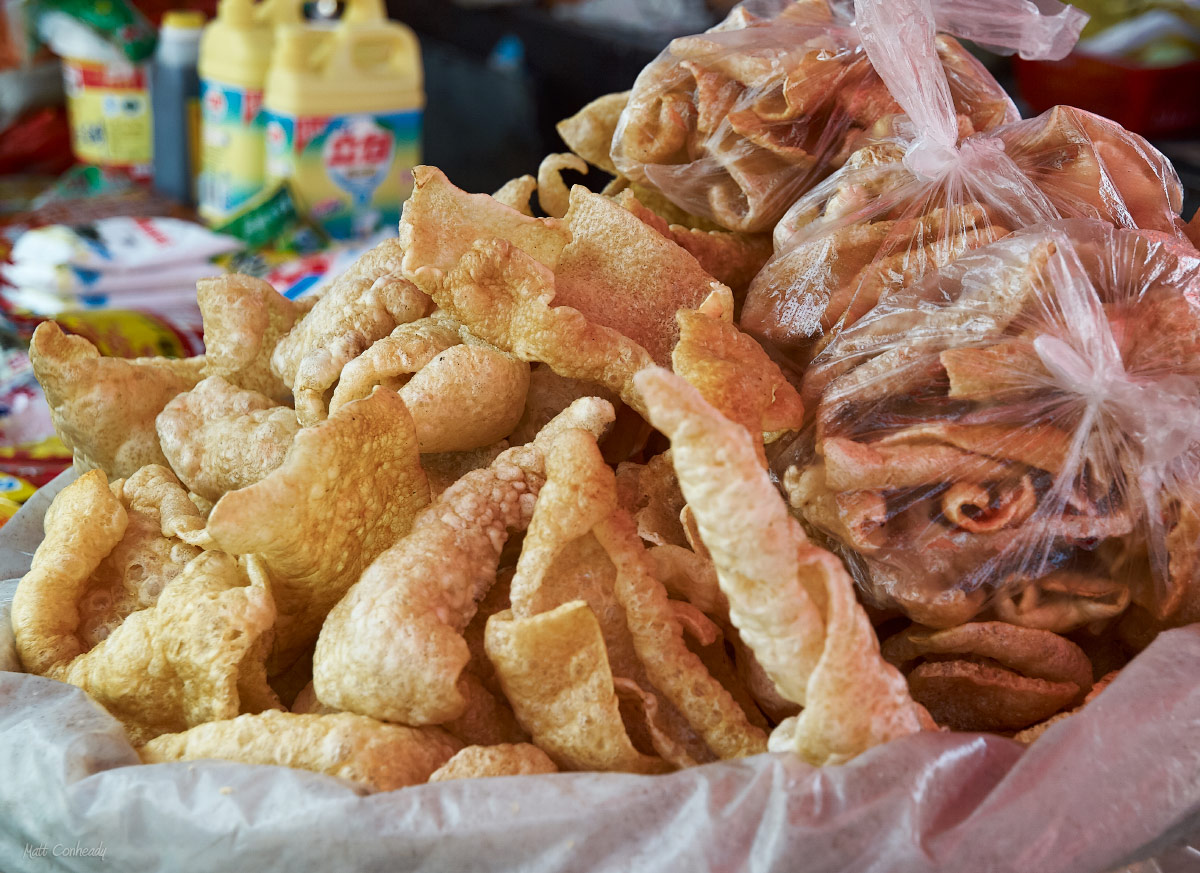
Fresh sausage

And the notorious “cured eggs”…

Look at the disgusting gelatinous inside.

Spiced pickled quail eggs
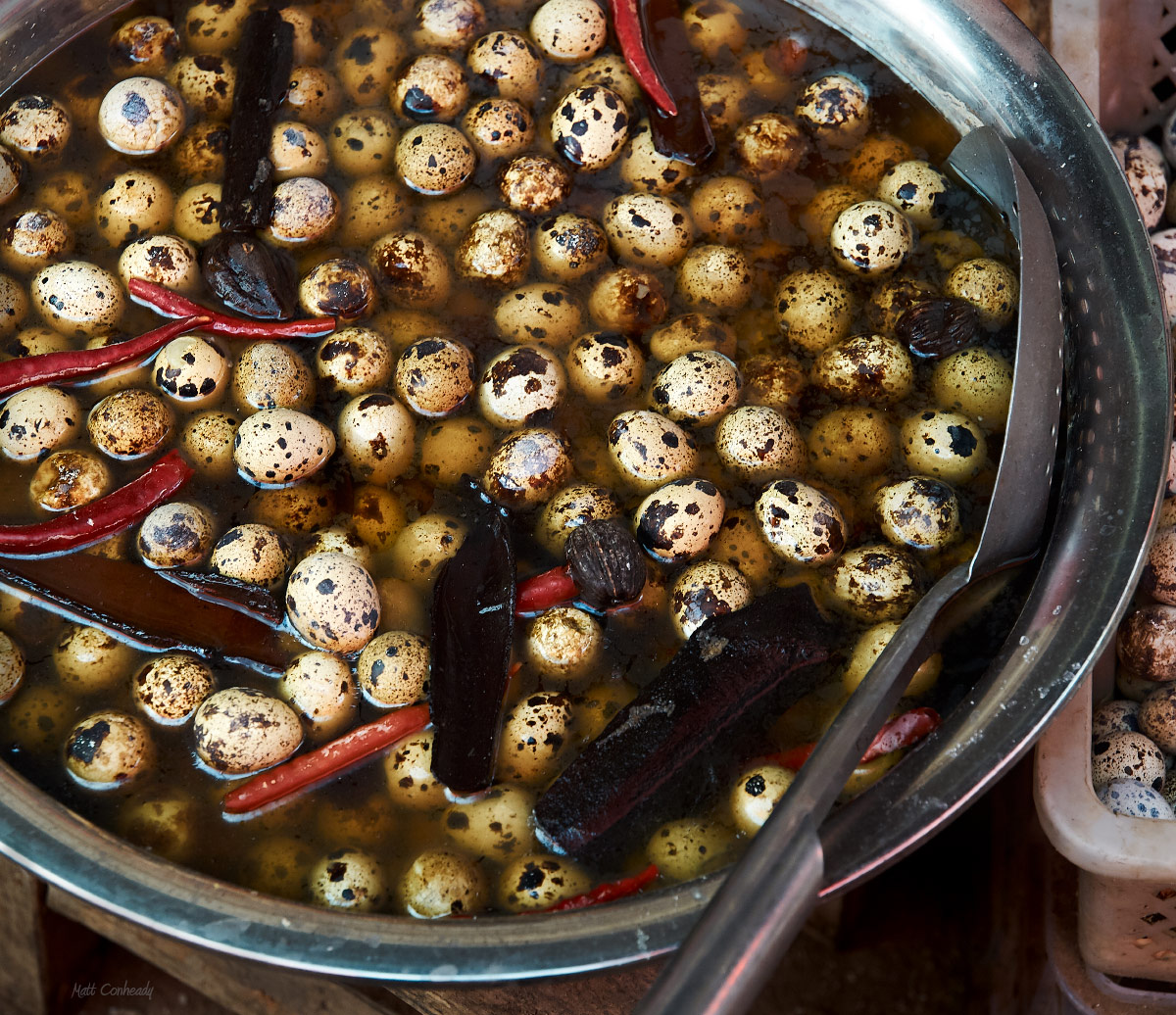
Getting some knitting done

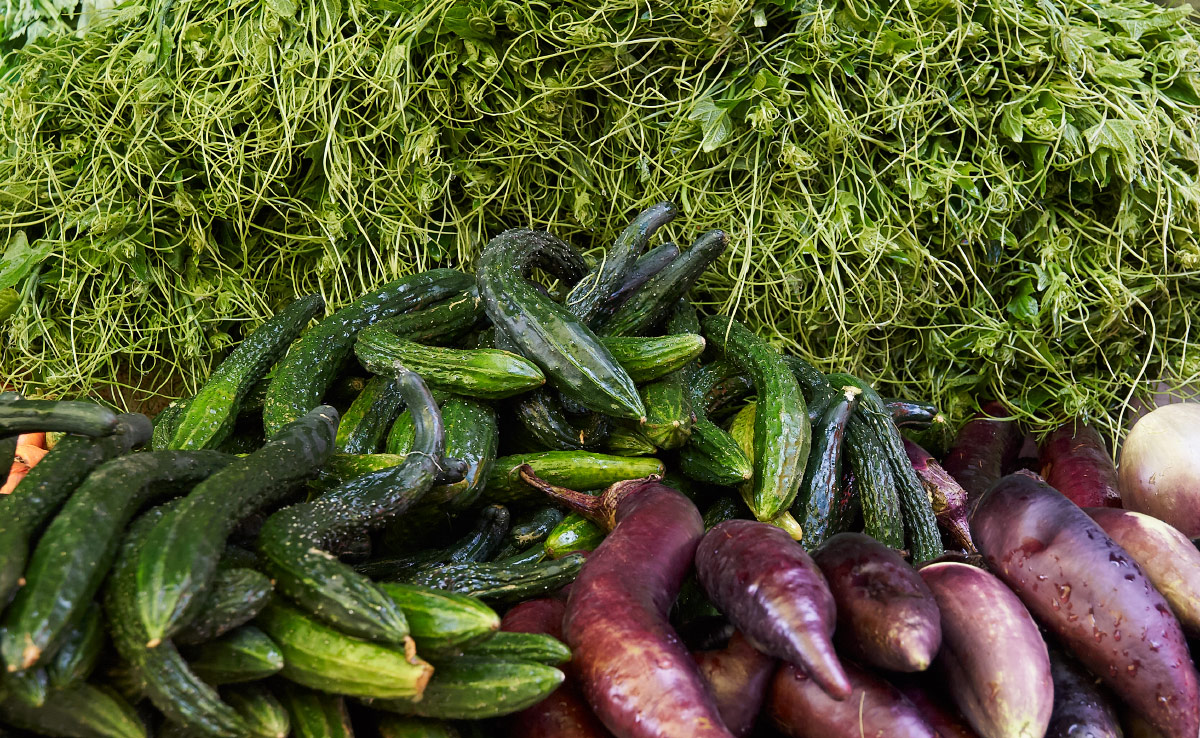





Write a Reply or Comment